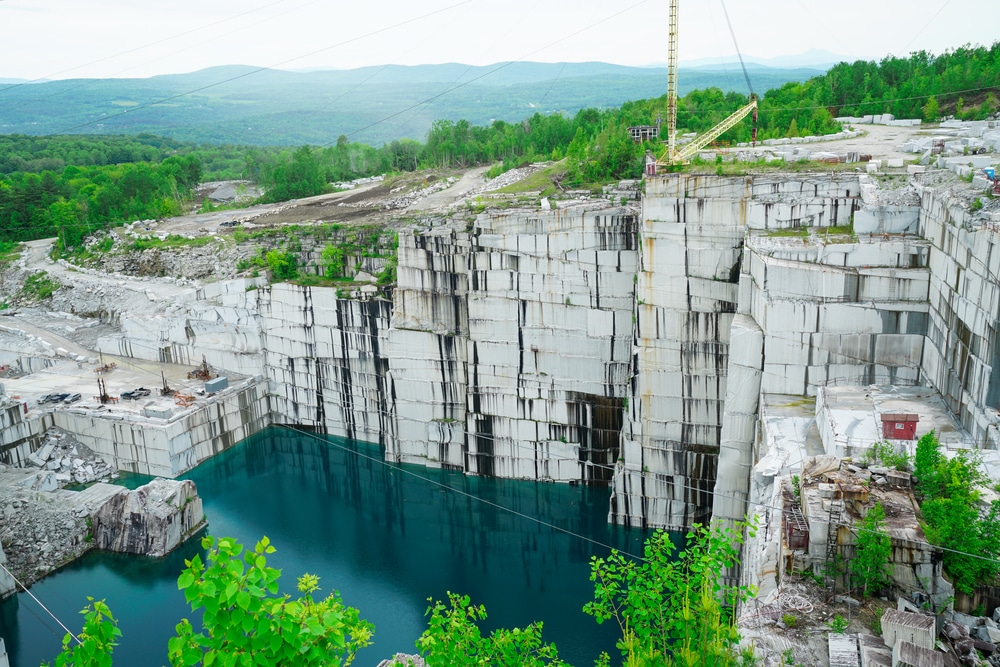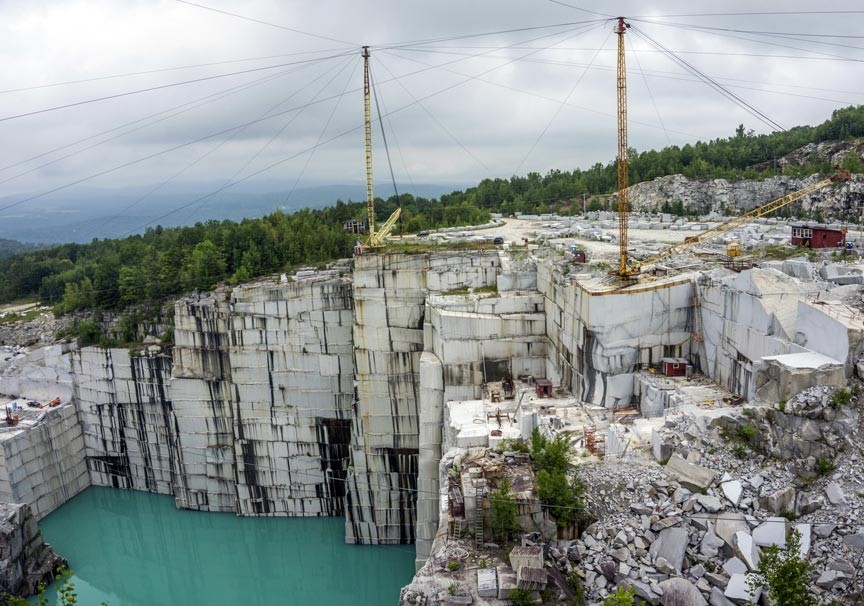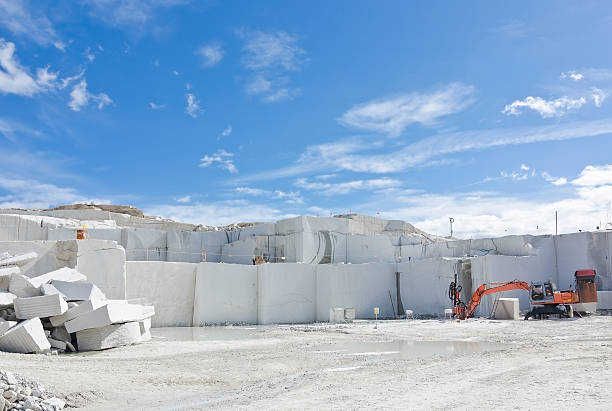Journeying Through Granite Quarries in South Africa: A Visual Odyssey
Journeying Through Granite Quarries in South Africa: A Visual Odyssey
Blog Article
Unleashing the Beauty and Sturdiness of Granite Quarry: A Trip Via Time
Granite quarries stand as testimonies to both the geological marvels of our earth and the long-lasting workmanship of mankind. The journey via time that granite quarrying stands for is a compelling narrative of innovation, willpower, and the elaborate dancing between nature and market. Comprehending the origins of this age-old practice, the evolution of strategies and devices used, and the contemporary relevance of granite quarrying reveals a tapestry rich in history and importance. As we peel off back the layers of time and dig into the elaborate world of granite quarrying, we reveal a tale that not only showcases the charm and resilience of this magnificent stone yet likewise drops light on the profound influence it has actually had on civilizations previous and present.

The Origins of Granite Quarrying
In the record of background, the beginnings of granite quarrying can be traced back to ancient worlds where the mission for sturdy building materials fueled the development of this ageless craft. From the impressive structures of ancient Egypt to the grand temples of Greece, granite has been respected for its toughness, elegance, and durability. The Egyptians, with their advanced quarrying techniques, were among the very first to draw out granite on a big range, utilizing it to build significant pyramids and detailed statues that have endured the test of time.
As worlds developed, so did the methods of quarrying granite. The Romans even more refined the techniques, developing tools and equipment to remove and transportation granite over huge ranges for their architectural jobs. The sturdiness and aesthetic appeal of granite made it a prized product for basilicas, monuments, and sculptures throughout the ages.
Today, the tradition of ancient quarrying techniques survives, with modern-day innovation boosting effectiveness while still paying homage to the craftsmanship of our forefathers. The beginnings of granite quarrying serve as a testament to human resourcefulness and the long-lasting appeal of this noble rock.
Devices and Methods of Quarrying
Exploring the careful craftsmanship of granite quarrying introduces a sophisticated range of tools and techniques diligently developed over centuries. Quarrying granite calls for customized devices to remove the stone from the planet successfully and with precision. Modern quarries utilize diamond-wire saws, high-powered drills, and explosives to damage apart the granite in a controlled fashion. These devices permit for the removal of big blocks of granite while minimizing waste and ecological influence.
Along with innovative equipment, conventional hand tools are still used in certain quarrying procedures to make sure fragile precision in drawing out the rock. Chisels, hammers, and wedges are used by competent quarry employees to different granite blocks along natural fractures, a method that has actually been given through generations.
Additionally, methods such as piercing upright and straight openings for inserting feathers and wedges, as well as the controlled use nitroglycerins in critical locations, enable quarry workers to extract granite effectively while protecting the stability of the rock. The consistency between modern technology and conventional craftsmanship is crucial to the lasting quarrying of granite for generations to find.
Development of Granite Quarries
The improvement of granite quarries with time discloses a remarkable story of technical innovation and sector advancement. From old times where hands-on tools like chisels and hammers were used to extract granite blocks, to the commercial change presenting steam-powered machinery for faster quarrying, the development of granite quarries has been marked by substantial technologies. In current decades, the introduction of diamond cord saws and progressed boring technologies has changed the removal process, enabling extra specific cuts and minimized waste of raw material.

Granite Quarrying in Modern Times
The development of granite quarrying methods from historical reliance on manual devices to the sophisticated approaches of modern-day times highlights an exceptional journey of technological innovation and sustainability practices within the sector. In modern granite quarrying, advanced machinery such as ruby cord saws, high-capacity excavators, and electronic boring equipment have actually changed the removal process. These devices boost effectiveness, precision, and safety and security, permitting for larger quantities of granite to be removed in a much shorter timeframe contrasted to standard techniques.
Moreover, modern-day quarrying methods prioritize sustainability and ecological stewardship - granite quarries in south africa. Companies are significantly embracing environmentally friendly methods like water recycling systems, dirt reductions innovations, and rehabilitation prepare for exhausted quarries. These campaigns aim to decrease the ecological impact of granite removal, conserve all-natural resources, and bring back quarried landscapes to their original state
Moreover, the integration of electronic technologies like drones, general practitioner tracking, and 3D modeling has made it possible for quarry operators to maximize operations, boost decision-making, and guarantee the lasting management of sources. By welcoming development and sustainability, the granite quarrying sector in modern times remains to thrive while supporting ecological responsibility.

Protecting and Securing Granite Quarries
In the middle of the progressing landscape of granite quarrying methods, conservation and security of these useful natural sites have become paramount concerns for industry stakeholders and ecological supporters alike. As granite quarries proceed to be an important source of click this coveted stone, it is important to take on lasting methods that ensure their longevity and secure bordering ecosystems.
Maintaining granite quarries includes executing efficient recovery strategies to restore the land post-extraction. granite quarries in south africa. This procedure includes improving the terrain, replanting indigenous plants, and producing habitats for wild animals to prosper. By restoring quarries to their all-natural state, the ecological impact can be minimized, and the elegance of these landscapes can withstand for future generations to appreciate
In addition, securing granite quarries requires applying guidelines that govern liable quarrying practices. This consists of tracking water quality, managing dust discharges, and managing sound levels to alleviate disturbances to the setting and nearby areas. Collaborative browse around these guys initiatives between sector players, governmental bodies, and preservation groups are critical in maintaining these criteria and making sure the lasting use of granite quarries.
Verdict
To conclude, the trip through time in granite quarrying exposes the beginnings, tools, methods, and advancement of this practice. The contemporary period has brought improvements in quarrying techniques, allowing the conservation and defense of these important natural deposits. It is important to proceed to promote sustainable practices to make sure the elegance and resilience of granite quarries for see it here future generations to value.
Report this page